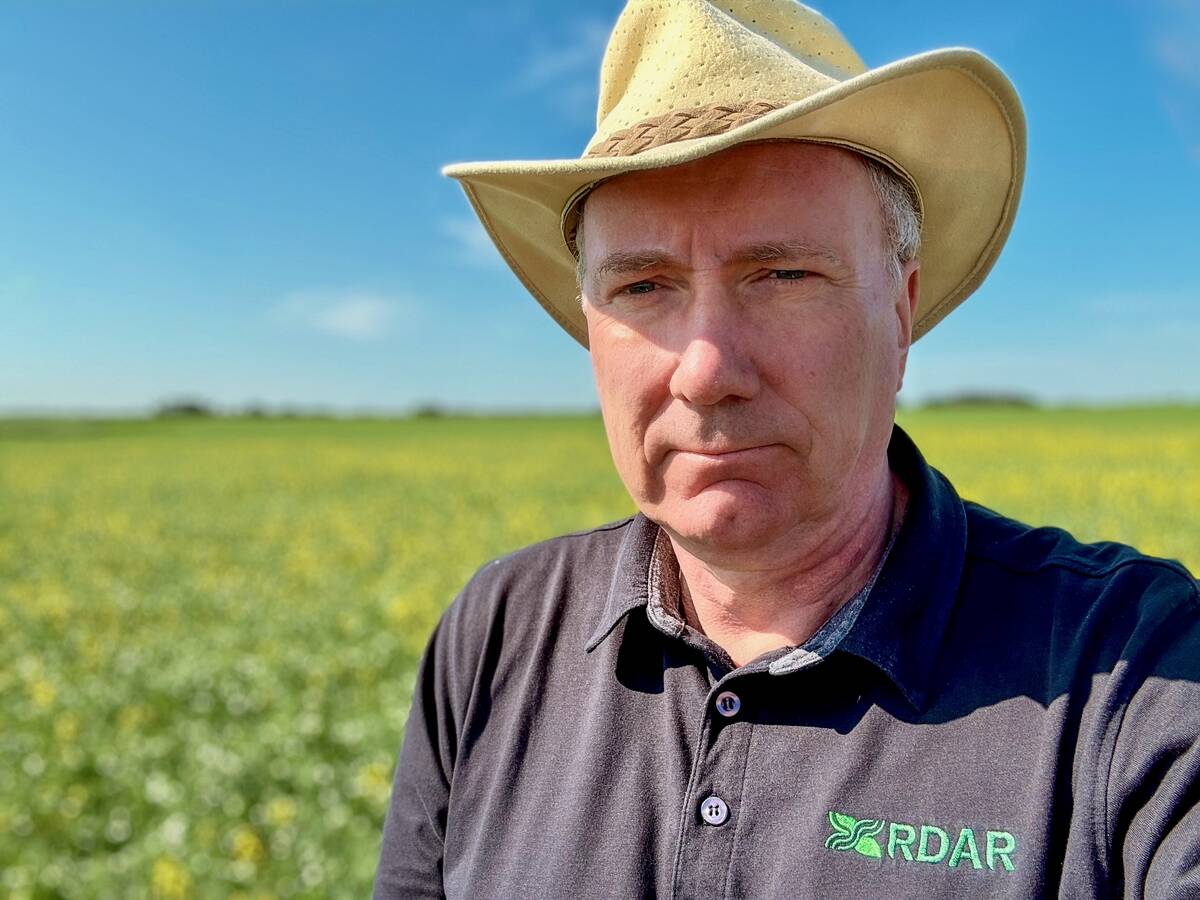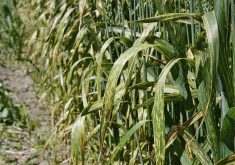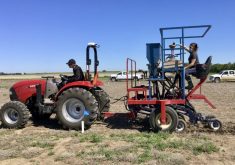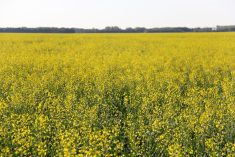With all the decisions that must be made in a growing season, on-farm research trials are a way for farmers to increase the odds of making the right call on major changes.
“When you do something yourself on your own farm, you can be pretty certain it will work in your conditions,” said Lewis Baarda, research program manager at Farming Smarter.
“It’s great to know that in theory something works, but until we actually get it on the farm, we can’t know really how well it works. On-farm research is where we do that last piece of adapting technologies to a farm. It’s that critical step between uptake and adoption to really prove the concept in a real-world setting.”
Read Also

RDAR continues to become more relevant and useful to producers five years after its inception
RDAR has already amassed a strong resume five years after its inception.
His organization launched its Field Tested program in 2018 and it’s been well received by farmers, he said.
“We can’t manage a crop in the field as precisely as we can in a small-plot trial — there’s variability in soil and moisture and nutrients,” said Baarda. “There’s all of these things in the real world that do affect how some of these technologies scale up to a field scale.”
Farmers are curious and eager to adopt new technology, but they need to know “if it makes sense for them,” he said.
“There’s a spirit of innovation and curiosity in agriculture and doing it yourself on your own farm is quite appealing because you know that those aggregate results may not apply specifically to your situation.”
Baarda predicts more producers will start doing on-farm research.
“If you can find something that will save you $10 an acre on this quarter and extrapolate that over the size of a large farm over a number of years, you can see it pays off,” he said. “So I absolutely think we’re going to see more and more of this and that some farms are just going to integrate it as part of the way they do things.”
Growing interest
“We’ve seen increased adoption and grown the number of trials we’re doing because of that, and now heading into 2022, we’re continuing to grow as the program continues to gain more attention from producers across the province,” said Jeremy Boychyn, agronomy research extension specialist with Alberta Wheat and Barley.

This year’s trials are examining the impact of higher seeding rates, using nitrogen-fixing bacteria and plant growth regulators, wider row spacing, and split in-crop nitrogen application. (Descriptions and locations of this year’s Plot2Farm trials can be found online.)
It can be challenging to create an on-farm trial that will generate information farmers can be confident in.
“There’s been a lot of scenarios where producers would maybe do one strip with a management practice that’s slightly different,” said Boychyn. “But those don’t always give us information that’s realistic — and probably less often than we like.”
Underestimating the work involved is another common issue, Baarda added.
“It takes a lot of effort and a lot of energy to implement an on-farm trial,” he said. “It can be easy to assume that you’ll just toss it into the middle of your workflow. But it is quite challenging, and to do a good job of it, there’s a lot of pieces that need to fall into place.”
And making sure it doesn’t slip down the priority list is critical, too.
“All the important things that happen for an on-farm trial happen at the same time as all the important things on a farm,” he said. “We’ve got production bottlenecks for seeding, for spraying, for harvest, and that’s exactly when we’re trying to take some extra time and resources to study these things. That’s a big part of the challenge — to still make it a priority when things are busy.”
Replicate and randomize
As much as possible, producers should incorporate trials into their existing workflow in an area that’s representative of the entire farm.
“Set aside a quarter section or even a piece of a quarter-section for a trial, but have it be a decent piece of land — not just what’s on the back 40 that you’re not really sure what to do with,” he said.
“Choose something that will be reflective of what’s happening on the rest of the farm so that when you get those results, you have the scientific validity to say that you can expect that same outcome again because it’s on a good piece of land that’s representative of what’s happening on the rest of the farm.”
Planning is also critical to ensuring trials are replicated and randomized — two absolutes that can’t be skirted.
“If you’re going to put in all that work, it’s critical to make sure that the outcomes you get are something you can trust and that you know the results are valid,” said Baarda. “That’s where some of the principles like replication and randomization come in.”
Boychyn agrees.
“We really want to implement replicated, randomized trials. That is where we’re going to get the most amount of value for the amount of time you spend on it,” he said. “Take the time to develop a plan, to work with your agronomist, to make sure it’s being implemented properly at seeding, and to collect whatever data you’ve determined you need to collect.
“You’d hate to go through that entire process to not collect the data in a way that’s going to give you useful information back.”
Some of the data may also take several years to collect, so be patient, he added.
“Making sure it’s designed and set up in a way that the information is going to be valuable is a long-term process, but it’s worth it in the end if it’s done properly.”















